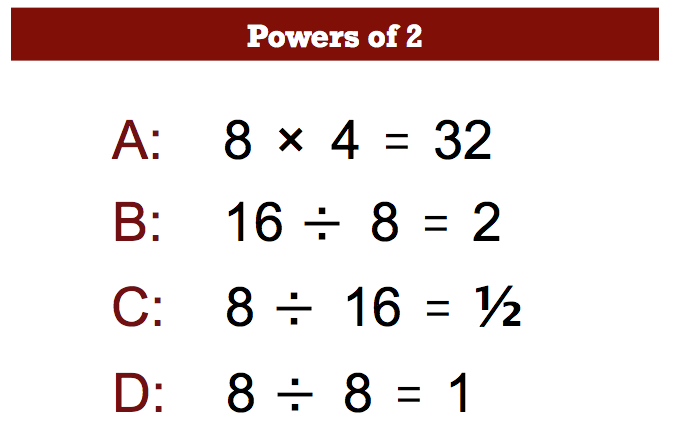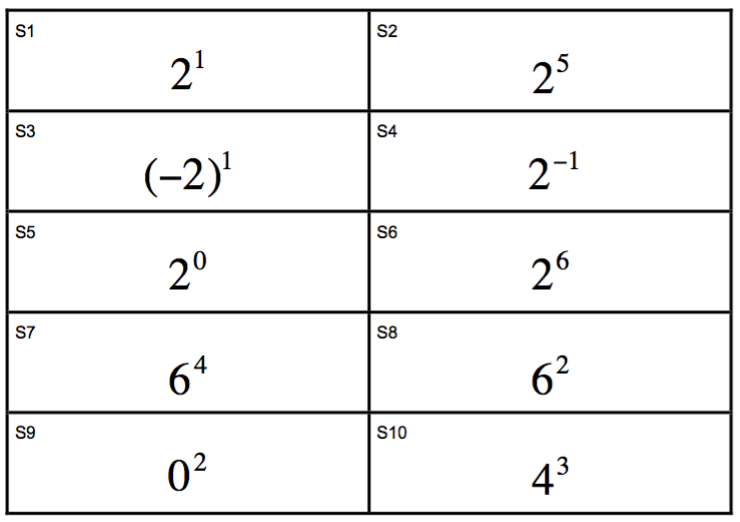The lesson used was developed by the Centre for Research in Mathematics Education, at the University of Nottingham, for the Mathematics Assessment Project. It is available for download from their website, and the whole lesson unit consists of a pre-lesson assessment, a post-lesson assessment, guidance for teachers, templates for card sets to be matched in the lesson and a PowerPoint presentation.
This lesson was about embedding and reinforcing knowledge about the rules of exponents, and in particular aims to help students:
- Recall and use the properties of exponents to generate equivalent numeric expressions.
- Identify the appropriate property to use and apply it correctly.
- Check the numerical value of an expression involving exponents without using a calculator
To start the lesson it suggested that teachers use an activity with writing four number sentences in powers of 2: this was in part about assessing where the students are in their learning. In the main part of the lesson the students should work in small groups to match small cards. This provides opportunities for formative assessment (peer assessment, teacher observation and intervention based on what they have observed).
The lesson has four main phases: a whole class introduction, some small group working, sharing between the small groups and a whole class discussion to finish off.
Phase 1:
The teacher displays the PowerPoint slide ‘Powers of Two’ (Figure 1) and asks the students to write first the statement A (8 x 4 = 32) in powers of two on their mini whiteboards and then to write the other three statements (B, C and D) also in powers of 2.

Phase 2:
The students work in small groups to put the cards shown in Figure 2 into groups of equivalent value. The activity is designed to challenge students by presenting them with expressions that can be simplified by applying the ‘laws’ of exponents (e.g. 68 ÷ 64), and others for which no law applies 22 + 23. The students need to recognise when a law applies, and then to apply the appropriate law accurately. When no law applies they need to find another way to evaluate the expression and for many students this presents challenge which can be seen as an epistemological obstacle. The cards fall into ten groups and the matching is not one to one. Some blank cards are provided in case students want to make up their own cards.


Phases 3 & 4: The small groups compare their results, and the teacher holds a whole class discussion.